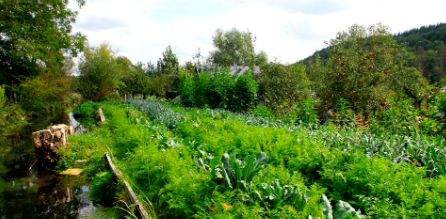Permaculture is a holistic approach to sustainable living that encompasses principles and practices aimed at designing resilient and productive ecosystems. It is a combination of the words "permanent" and "agriculture," but its scope goes beyond just agriculture. Permaculture seeks to create regenerative systems that mimic the patterns found in natural ecosystems, promoting harmony between humans, nature, and the environment. In this article, we will explore the key concepts and principles of permaculture, as well as its potential benefits and applications.
At its core, permaculture is based on three ethical principles:
- Care for the Earth,
- Care for people, and
- Fair distribution of resources.
These principles guide the design and implementation of permaculture systems, which aim to meet human needs while regenerating and preserving the natural environment.
Permaculture design focuses on the following:
- Maximizing resource efficiency,
- Utilizing renewable energy sources and
- Minimizing waste.
It emphasizes the use of organic and regenerative agricultural practices, such as companion planting, mulching, and composting, to create self-sustaining food production systems. By imitating the diversity and resilience of natural ecosystems, permaculture gardens and farms can reduce reliance on external inputs and increase long-term productivity.
In addition to food production, permaculture extends its principles to other aspects of human settlements, including water management, energy systems, waste management, and housing design. By integrating these elements into a cohesive whole, permaculture aims to create self-sufficient and harmonious communities.
One of the key concepts in permaculture is "stacking functions." This means that each element within a system should serve multiple purposes, maximizing its utility and minimizing waste.
For example, a tree in a permaculture garden can provide shade, produce fruits, improve soil fertility through its leaf litter, and act as a windbreak. By consciously designing systems that incorporate such multi-functional elements, permaculture practitioners create productive and resilient landscapes.
Permaculture also emphasizes observation and understanding of natural patterns and processes. By carefully studying the interactions between different elements in an ecosystem, permaculturists can identify opportunities for beneficial relationships and design interventions that work with nature rather than against it.
Summary:
Permaculture offers a holistic and sustainable approach to living in harmony with nature. By applying ecological principles to design systems that meet our needs while regenerating the environment, permaculture provides a pathway towards a more resilient and regenerative future. Its principles and practices can be applied in a variety of contexts, from small-scale gardens to large-scale agriculture, urban planning, and community development.
Permaculture encourages us to rethink our relationship with the natural world and recognize our role as caretakers of the Earth. By adopting permaculture principles and practices, we can contribute to the creation of more sustainable and regenerative systems that benefit both present and future generations. Whether you're an avid gardener, a farmer, or simply interested in sustainable living, exploring permaculture can inspire positive change and help create a more sustainable and harmonious world.
DIRECT LINK


